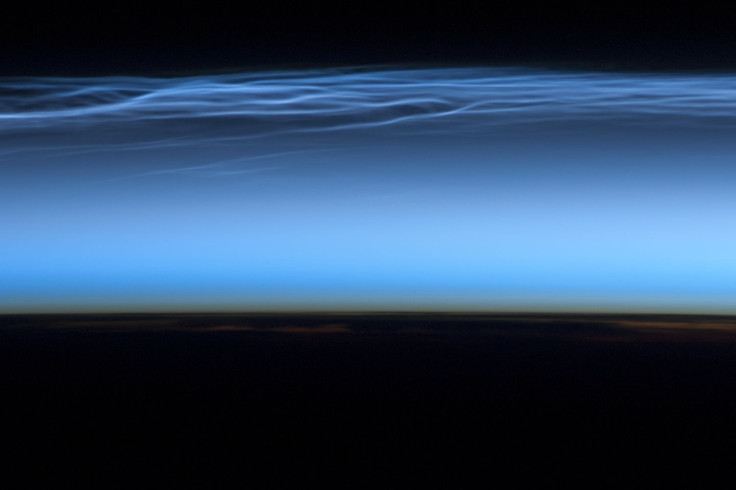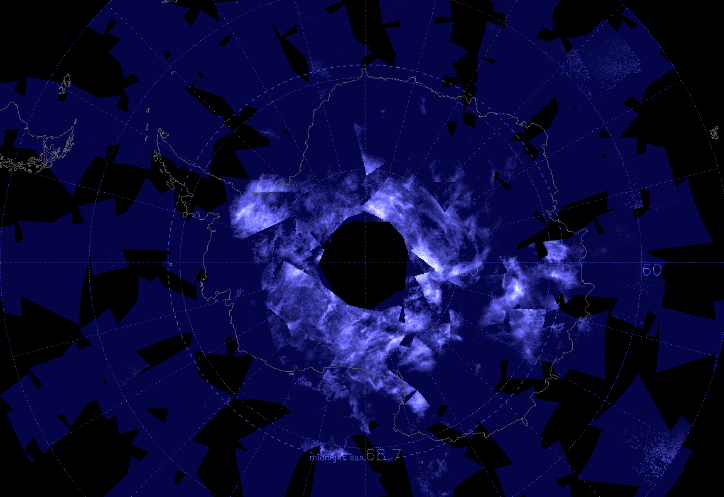Noctilucent Cloud Season Came To Antarctica Earlier Than Usual This Year, NASA Satellite Reveals

Every year, high in Earth’s atmosphere, wispy tendrils of noctilucent, or night-shining, clouds appear above the South Pole. These high-altitude clouds — located roughly 50 miles above the surface, and seeded by the fine debris of disintegrating meteors, have long been considered a sort of “canary in a coal mine” for methane — an extremely potent greenhouse gas.
Observations made using NASA’s Aeronomy of Ice in the Mesosphere (AIM) spacecraft have revealed that this year, the noctilucent cloud season in the Antarctic began earlier than usual — an observation that some scientists believe is a sign of the impact the inexorable build-up of greenhouse gases is having on Earth’s climate.
This year the noctilucent cloud season began on Nov. 17, which ties with the earliest start yet in the AIM record of the Southern Hemisphere.

“AIM studies noctilucent clouds in order to better understand the mesosphere, and its connections to other parts of the atmosphere, weather and climate. We observe them seasonally, during summer in both the Northern and Southern hemispheres. This is when the mesosphere is most humid, with water vapor wafting up from lower altitudes,” NASA explained in a statement released Friday. “Additionally, this is also when the mesosphere is the coldest place on Earth — dropping as low as minus 210 degrees Fahrenheit — due to seasonal air flow patterns.”
In recent years, not only have noctilucent clouds begun appearing earlier, they have also been spreading over larger areas. In a statement released in 2013, James Russell, the principal investigator of AIM, argued that this was due to the growing abundance of methane in the atmosphere, which provides more water vapour for the formation of ice crystals that make up these clouds.
“Winter to summer changes in the Antarctic lower atmosphere sparked a complex series of responses throughout the atmosphere – one of which is an earlier noctilucent cloud season,” NASA said. “Since its 2007 launch, AIM data has shown us that changes in one region of the atmosphere can affect responses in another distinct, and sometimes distant, region. Scientists call these relationships atmospheric teleconnections.”
© Copyright IBTimes 2024. All rights reserved.





















